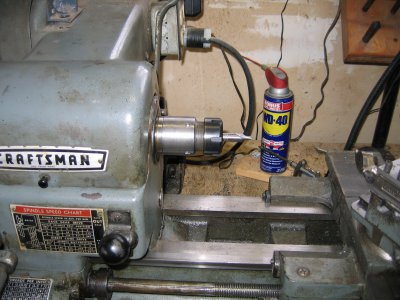-
Welcome back Guest! Did you know you can mentor other members here at H-M? If not, please check out our Relaunch of Hobby Machinist Mentoring Program!
You are using an out of date browser. It may not display this or other websites correctly.
You should upgrade or use an alternative browser.
You should upgrade or use an alternative browser.
ER32 or ER40???
- Thread starter Canus
- Start date
- Joined
- Feb 24, 2018
- Messages
- 1,044
ER 32 goes to ~3/4”
ER 40 goes to ~1”
If you want to use the system on a lathe, I’d go with the larger ER 40, for my mill I have ER 20, ER 32 and ER 40, rarely need the 40, I rarely need to use or really have the hp to run an end mill larger than 3/4”.
ER 40 goes to ~1”
If you want to use the system on a lathe, I’d go with the larger ER 40, for my mill I have ER 20, ER 32 and ER 40, rarely need the 40, I rarely need to use or really have the hp to run an end mill larger than 3/4”.
- Joined
- Feb 1, 2015
- Messages
- 9,994
Cost is another issue. ER40 collets run about 20% more than ER32 collets.
- Joined
- Oct 31, 2016
- Messages
- 2,720
I would go with the ER40 because of the size of the bore on your lathe. I went with ER32 because my lathe only has a 3/4 bore. I also went with metric collets because there is no gap in coverage. Imperial collets have gaps in coverage. I mostly use my 10 mm and 13 mm collets to hold 3/8 and 1/2 end mills. You will need to make a collet chuck for your lathe. Not hard. If I can make one anybody can.


- Joined
- Dec 20, 2012
- Messages
- 9,422
Here is something else to consider. ER collets can be sprung when holding diameters that are far from their nominal size. Yes, ER collets can compress down about 0.040" and still hold but do this enough and their accuracy suffers eventually. On a lathe, in a hobby shop, we are often using stock that is off size or non-nominal so it is common to compress ER collets to hold them. Since this is the case, it is wise to use cheaper import collets on the lathe.
Now, on the mill, accuracy counts. ER collets are most accurate when holding tools at or very near to their stated sizes. Fortunately, most tools have shanks that fall on size and distorting a collet to hold an off size shank is not commonly encountered. Given that accuracy of the tool holding system has a major impact on tool life, accuracy and finishes it stands to reason that you should use high quality collets on the mill to hold your tools. Most of us who use ER chucks on the mill will own several sizes of chucks because no one chuck size fits all. Quite often, a smaller chuck is needed to gain access to a feature on a part that prevents the use of a larger chuck. I have an ER40, ER32 and ER20 because of this demand. This can get expensive because you have to buy separate sets of collets for each of these chucks. I happen to use Techniks collets for each ER chuck used on my mill and yes, that cost a lot but it cannot be helped.
My point is that for the lathe, an ER40 chuck with import collets makes sense. On the mill, I would go with an ER32 system (max shank capacity is 3/4") and add other chucks as needed. Buy high quality collets for use only on the mill and do not use them for work holding on the lathe.
Now, on the mill, accuracy counts. ER collets are most accurate when holding tools at or very near to their stated sizes. Fortunately, most tools have shanks that fall on size and distorting a collet to hold an off size shank is not commonly encountered. Given that accuracy of the tool holding system has a major impact on tool life, accuracy and finishes it stands to reason that you should use high quality collets on the mill to hold your tools. Most of us who use ER chucks on the mill will own several sizes of chucks because no one chuck size fits all. Quite often, a smaller chuck is needed to gain access to a feature on a part that prevents the use of a larger chuck. I have an ER40, ER32 and ER20 because of this demand. This can get expensive because you have to buy separate sets of collets for each of these chucks. I happen to use Techniks collets for each ER chuck used on my mill and yes, that cost a lot but it cannot be helped.
My point is that for the lathe, an ER40 chuck with import collets makes sense. On the mill, I would go with an ER32 system (max shank capacity is 3/4") and add other chucks as needed. Buy high quality collets for use only on the mill and do not use them for work holding on the lathe.
- Joined
- Nov 15, 2016
- Messages
- 943
- Joined
- Sep 29, 2017
- Messages
- 2,295
Here are links to er ranges. I added ER50 so you'll have more options.

